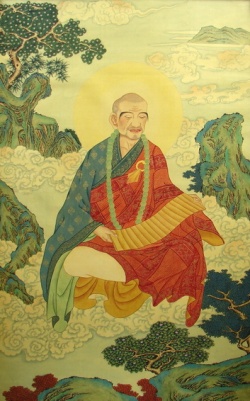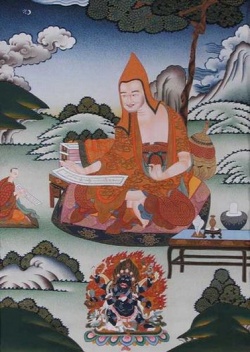Early Buddhism and Vasubandhu's version
Vasubandhu (4th-c) is a rather interesting character. Among the works he composed, perhaps his Abhidharmakosa is the most famous being sort of an encyclopedia of essential Abhidharma Shastra terms. A less known work of his is the Refutation of the Theory of a Self. I need to mention that I am using James Duerlinger’s book, Indian Buddhist Theories of Persons, which is a translation of Vasubandhu’s work on persons without self. It is on the Internet in pdf at http://goo.gl/B2Wyx
After reading Vasubandhu's treatise, one would be strongly inclined to draw the conclusion that Vasubandhu is not at all familiar with the contents of the Nikayas/Agamas which make up early Buddhism. I would go so far to say that his brand of Buddhism is not early Buddhism.
From the perspective of the Nikayas/Agamas the self is not the problem. The problem is a case of mistaken identity. Worldlings are gloaming on to what is not the self as if it were the self. In other words, worldlings are seeing the self in what is not the self (anattani attânam). Vasubandhu is not going here. He thinks the problem is the self or âtman—not a case of mistaken identity.
Central to Vasubandhu's argument is the understanding that there is nothing independent of the Five Aggregates such as a self or âtman. The aggregates are the person or pudgala. A person is never a self or âtman in the sense of being transcendent. Put in slightly different terms, the psychophysical organism is the temporal person made of aggregates which has no self.
From Vasubandhu’s perspective, although some people use the term âtman, they really don’t understand that they are talking about the person or pudgala, since the âtman is not real, since it cannot be known by direct perception or correct inference like with physical or determinate things.
To encapsulate Vasubandhu’s view, as persons we are just a continuum of aggregates or skandhas. There is no self apart from this continuum. While his conclusion may seem authoritative, as I pointed out earlier, Vasubandhu seems not at all to be familiar with the contents of the Nikayas/Agamas. The discourses of the Buddha do not take the self as being the main problem with regard to suffering but, instead, the Five Aggregates. We are to reject them if only for the reason that they are evil! (Ironically, the self is never treated as being evil.)
“When there is form, Radha, there might be Mara, or the killer, or the one who is killed. Therefore, Radha, see form as Mara, see it as the killer, see it as the one who is killed. See it as a disease, as a tumor, as a dart, as misery, as really misery. Those who see it thus see rightly. When there if feeling ... When there is perception ... When there are fabrications ... When there is consciousness, Radha, there might be Mara, or the killer, or the one who is killed” (S. iii. 189).
Understanding that the aggregates are Mara, it is no wonder that the Buddha taught the following:
"But the instructed noble disciple ... does not regard form as self ... nor feeling as self ... nor perception as self ... no volitional formations as self ... nor consciousness as self....He no longer keeps running and revolving around form, around feeling, around perception, around volitional formations, around consciousness. As he no longer keeps running and revolving around them, he is freed from form, freed from feeling, freed from perceptions, freed from volitional formations, freed from consciousness. He is freed from birth, aging, and death; freed from sorrow, lamentation, pain, displeasure, and despair; free from suffering, I say" (S. iii. 150).
If Vasubandhu were still alive today, I wonder if he could answer who is freed from form, freed from feeling, freed from perceptions, freed from volitional formations, freed from consciousness? I am sure a Zen master like Rinzai could beat it out of him.

